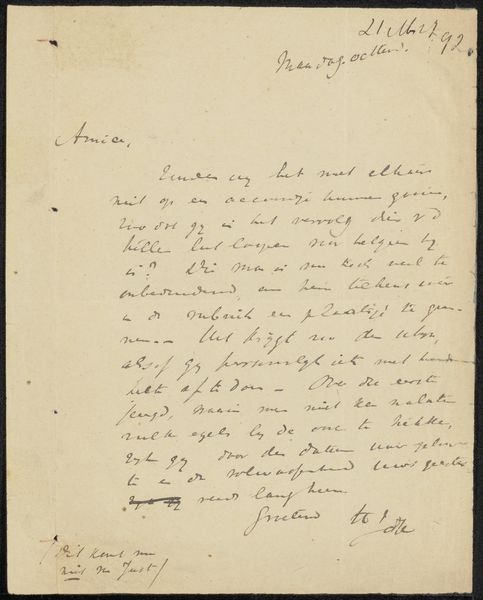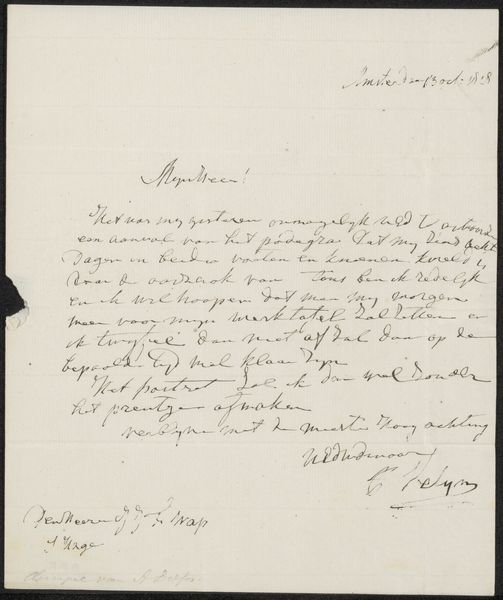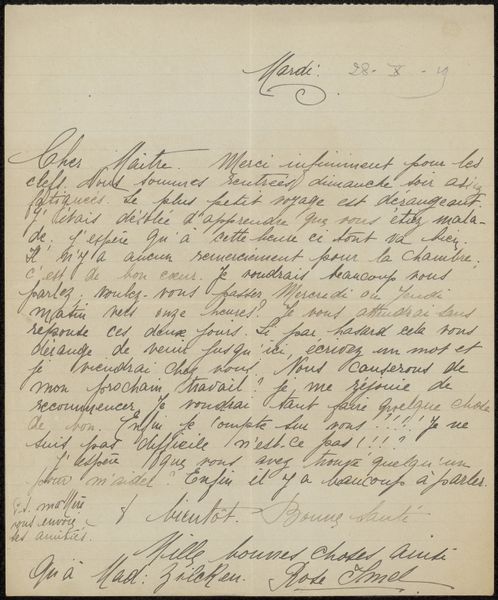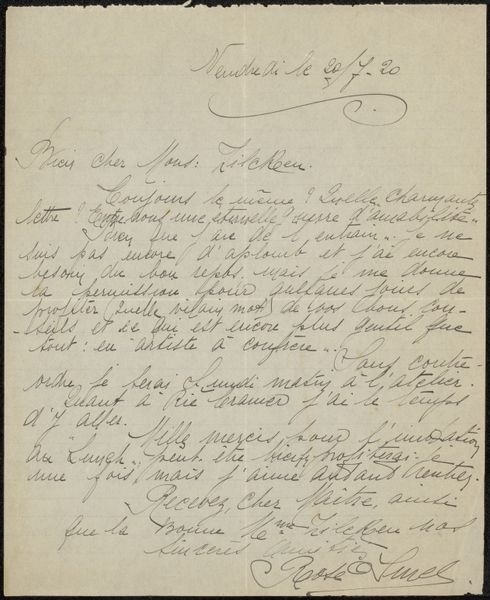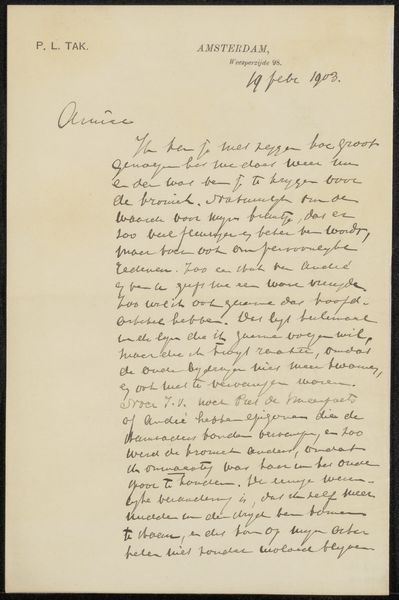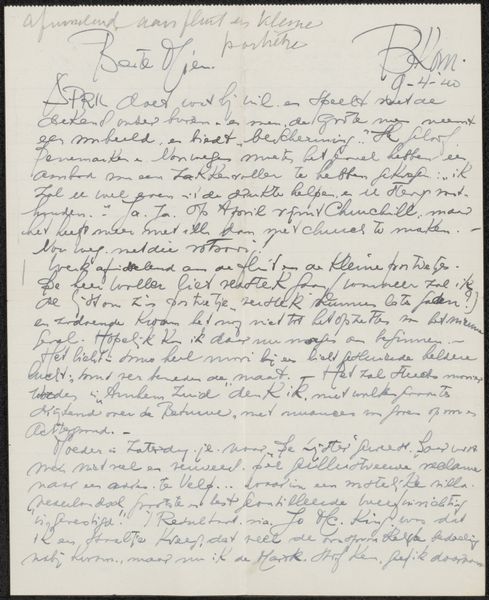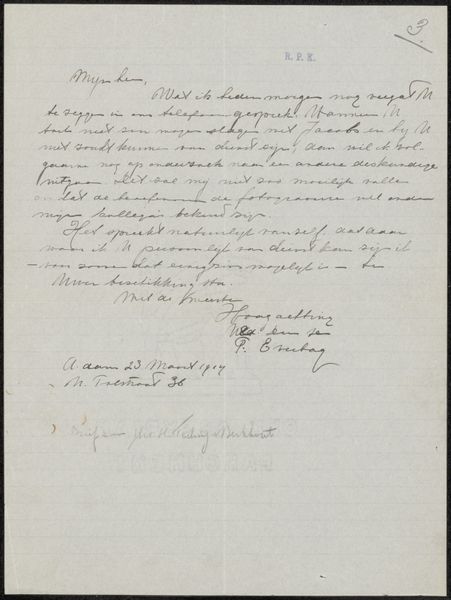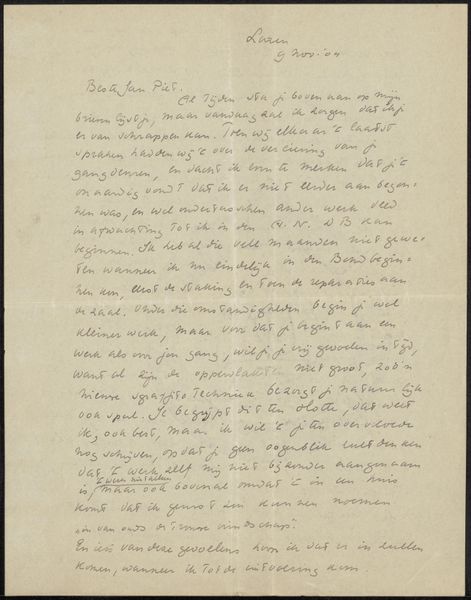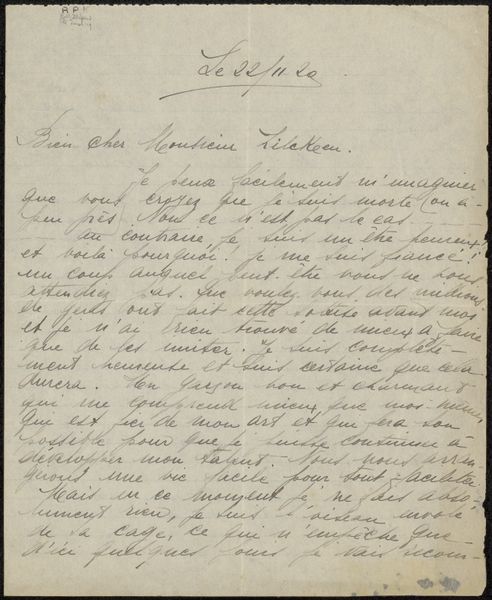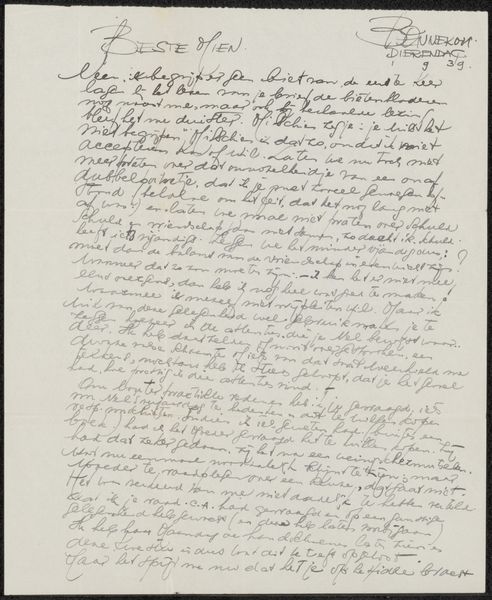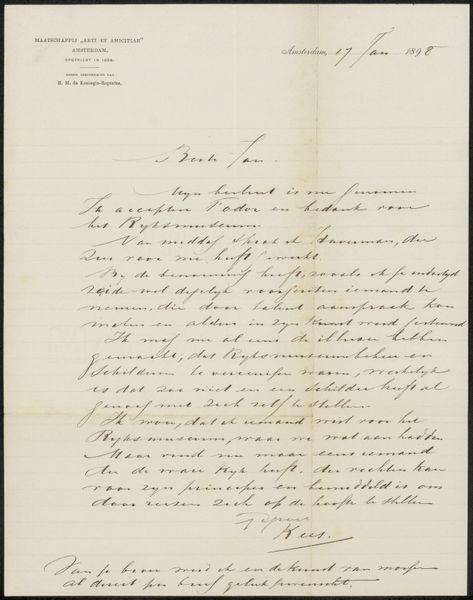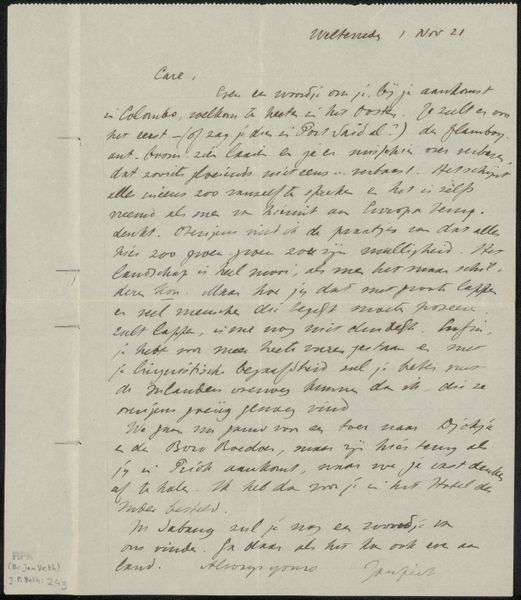
drawing, paper, ink
#
drawing
#
paper
#
ink
Copyright: Rijks Museum: Open Domain
Curator: We're looking at a letter from Henri Verstijnen to Hendrik Teding van Berkhout, likely penned in 1931. It's crafted with ink on paper. It has the feeling of something quite personal. What do you make of it? Editor: It feels quite dense; the handwriting gives it an almost impenetrable quality, as though its secrets are heavily guarded. How would this have functioned as a piece of art, socially? Curator: Good question. Verstijnen was likely building relationships with key figures, Hendrik Teding van Berkhout clearly had some authority to own a "I. Rjyks Prentenkabinet", a place that may display artworks, an influential role to say the least! Think about the socio-political dynamics at play. Letters such as this were a way of fostering patronage, circulating ideas and consolidating an artist's position within artistic and social networks of the time. Editor: So, it was a way to almost literally "write" himself into the art world of the time? Were these letters always intended as art objects themselves? Curator: Not necessarily conceived of as discrete "art objects," but certainly artifacts demonstrating the social networks artists depended upon, highlighting the politics of reputation-building. Do you think viewing it here removes it from its social function and changes how we receive the artwork? Editor: It certainly does shift it. Here, the focus is almost purely aesthetic appreciation or historical curiosity, removed from its original practical purpose. Curator: Precisely. We're now spectators, where previously the recipient had an active role in Verstijnen's career trajectory. Editor: Fascinating. I hadn’t considered how much context is embedded in such a seemingly simple item. It changes the piece completely! Curator: Absolutely, recognizing how art interacts with broader social systems is always essential.
Comments
No comments
Be the first to comment and join the conversation on the ultimate creative platform.
